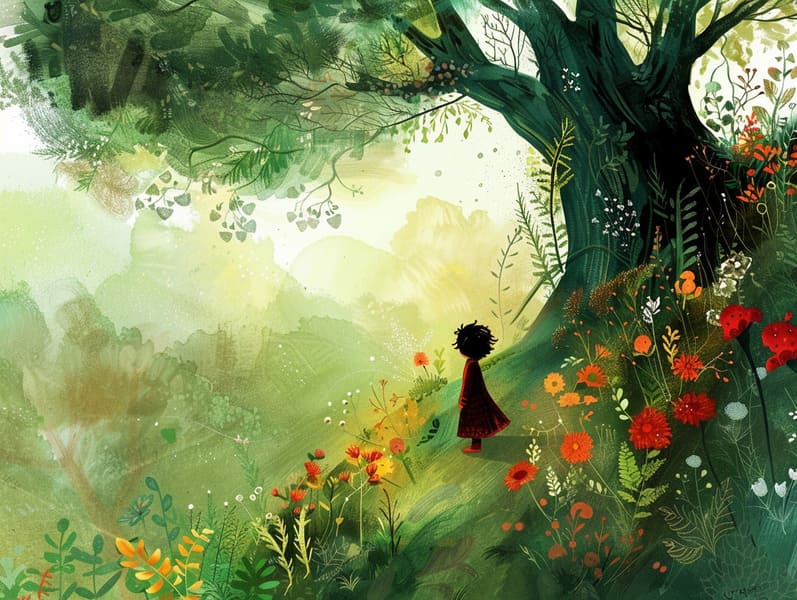The Evolution of Legendary Fairy Tales with Their Unfading Charm.
The Evolution of Legendary Fairy Tales with Their Unfading Charm.
Blog Article

Old fairy tales have long histories. These tales have been spoken from one generation to the next long before they were ever inscribed. They sprang from a variety of backgrounds, including European traditions. They were initially narrated among grown-ups, often carrying themes and messages pertaining to the societal norms and beliefs of the time.
Jacob and Wilhelm Grimm, Jacob and Wilhelm (the Grimm brothers), were among the first to compile many of these beloved stories. Their compilation, "Grimm's Fables," included classics like "Cinderella," "Hansel and Grethel," and "Snow-White and Rose-Red," which have since become staples in the world of classic fairy tales. Similarly, Hans Andersen's fantastical stories, such as "The Sea Maid," and "The Little Duckling," have enchanted hearts worldwide, cementing their place in the pantheon of classic fairy tales.
Though they are old, fairy tales remain as relevant as ever, especially as kids' bedtime tales. These fantastical tales are now available in various formats, including vibrantly illustrated books, captivating animations, and web-based fairy tales.
Their continued relevance can be linked to several magical reasons:
Significant Morals: Classic fairy tales often present important moral lessons. Stories like "The Tale of the Boy Who Cried Wolf" teach the merit of truth, while "The Story of the Tortoise and the Hare" show the values of determination and unassuming nature. These tales offer young readers clear distinctions between ethical and unethical, molding their moral compass in a kind yet profound way.
Kindness and Comprehension: Classic fairy tales frequently present individuals facing tests and troubles, prompting young listeners to comprehend with their struggles and back their triumphs. For instance, "The Story of Beauty and the Beast" conveys the significance of valuing inner qualities to understand the inner being of a person, nurturing insight and understanding.
Cultural Perception: Many classic fairy tales are saturated in the cultural contexts from which they sprang. Engaging with these tales can provide captivating looks into different customs, building a sense of cultural awareness and comprehension.
Fantasy and Innovation: The fanciful elements in classic fairy tales—talking animals—boost children’s imaginative ideas. These tales guide readers to fantasy realms, revitalizing inventive thinking and a sense of astonishment that remains a lifetime.
Ancient fairy tales are not only fascinating but also instructive. They serve as magical tools in cultivating various brain and heart skills in kids. When classic fairy tales are read aloud, they advance language proficiency by presenting new phrases and detailed sentence structures. This practice also develops hearing perception and focus, as kids remain attentive, keen to website see what happens next.
Furthermore, contemplating the themes and characters of fairy tales can improve reasoning skills and problem-solving abilities. The young are shown to recognize patterns, make predictions, and make sense of cause and effect. These analyses also encourage children speak out their thoughts and feelings, enhancing their emotional intelligence.
In today’s technological age, the abundance of digital storybooks has made these tales more available than ever. Web platforms and digital apps make available vast collections of traditional fairy tales that can be enjoyed or heard anytime, anywhere. Fairy tales spoken are particularly common, featuring an entertaining method for children to be a part of these enchanting tales. Narrated books and read-aloud videos carry characters and settings to life, often complemented by charming melodies and background music that boost the narrative journey.
The lasting allure of traditional fairy tales lies in their ability to change to the present while holding onto their basic principles. Contemporary modernizations of these stories often integrate more multicultural protagonists and modern settings, making them meaningful to today’s audience. However, the fundamental themes of daring, kindness, and fair play remain unchanged, continuing to touch young readers of all ages.
Fairy tales also offer a sense of reassurance and predictability. They make available a systematic narrative with a plain beginning, middle, and end, often coming to a close with the culmination of conflicts and the triumph of virtue over wickedness. This reliability can be comforting for kids, distributing a sense of dependability in an ever-changing world.
Ancient fairy tales continue to delight and educate new generations, maintaining their delight and applicability in modern society. As children's bedtime stories, they make available a perfect blend of delight and instruction, developing moral values, empathy, and creativity. The proliferation of free fairy tales online and the prevalence of fairy tales spoken affirm that these ancient fairy tales remain obtainable to new generations.
By upholding and releasing these tales, we continue to praise the rich tapestry of legends and cultural heritage. Whether you are accessing a richly illustrated book, perusing a internet collection, or listening through an voice book, the fascination of bedtime fairy tales is always within reach. These fairy tales emphasize of the timeless influence of narratives and its ability to bring us together across eras and regions.
Regardless if you are reading a richly illustrated book, delving into a online collection, or playing an sound book, the majesty of Grimm's fairy tales is always within reach.
These narratives illustrate of the unwavering spell of stories and its ability to gather us across epochs and places, establishing a link that enchants and educates alike.